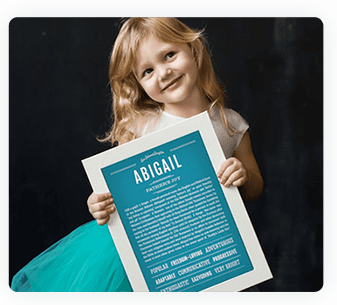Literary Characters
OF THE BABY NAME RAVEN
Lenore is a character in Edgar Allen Poe’s 1845 poem, “The Raven”, which was perhaps his best known piece. The raven gets the title, but Lenore gets the focus. Obviously young, beautiful and too soon take to her heavenly reward, Lenore is remembered with heart-wrenching melancholy by the narrator. He is visited by the raven, to whom he poses his metaphysical questions, and whose every response is “Nevermore”. The tone of the poem is bleakly unyielding in its refusal to bestow the comfort of eternal reunion. Lenore is fated to be either remembered or forgotten - but joined? – nevermore.
The Raven is the title of Edgar Allen Poe’s perhaps most famous poem, first published in 1845. The Raven visits the poet, who is mourning the death of his love, Lenore, and perches upon a bust of Pallas Athena, the goddess of wisdom. Upon being asked his name, our Raven replies: “Nevermore”. Well, it rhymes with Lenore, so, good choice in a poem. This, in fact, is the Raven’s only word, a word he uses to judicious effect when prompted by the narrator. Asked if he, too, will leave the poet, as have so many friends before, he replies: “Nevermore”. Is he, demands the poet, sent here by avenging angels? “Nevermore”. Asked if he may meet the lovely Lenore once more in heaven, the answer is “Nevermore”. When the poet, driven to distraction, bids the Raven to leave him alone to his sorrows and be gone, again, the ominous answer is “Nevermore”. And so the Raven sits on his classic perch, and the poet lies beneath…”And my soul…Shall be lifted – nevermore!”.
The Raven is the title of Edgar Allen Poe’s perhaps most famous poem, first published in 1845. The Raven visits the poet, who is mourning the death of his love, Lenore, and perches upon a bust of Pallas Athena, the goddess of wisdom. Upon being asked his name, our Raven replies: “Nevermore”. Well, it rhymes with Lenore, so, good choice in a poem. This, in fact, is the Raven’s only word, a word he uses to judicious effect when prompted by the narrator. Asked if he, too, will leave the poet, as have so many friends before, he replies: “Nevermore”. Is he, demands the poet, sent here by avenging angels? “Nevermore”. Asked if he may meet the lovely Lenore once more in heaven, the answer is “Nevermore”. When the poet, driven to distraction, bids the Raven to leave him alone to his sorrows and be gone, again, the ominous answer is “Nevermore”. And so the Raven sits on his classic perch, and the poet lies beneath…”And my soul…Shall be lifted – nevermore!”. Now, with all due respect to the sensibilities of the 19th century, we are inclined to smile along with James Russell Lowell (himself a Poe contemporary) when he says: “Here comes Poe with his raven, like Barnaby Rudge/Three-fifths of him genius and two-fifths sheer fudge.”
Moses the Raven is a character in George Orwell’s 1945 allegorical novella, Animal Farm, who is a special pet of Mr. Jones. He does not have to work and he does not listen to the revolutionary speeches of Old Major. He is a tame bird who likes to talk about “Sugarcandy Mountain”, where animals go when they die, and he is accused of giving false hope to the animals that their hard lives and sufferings will be compensated for after death. Napoleon and the other pigs find him very troublesome in their efforts to organize the animals. When the animals on the farm do revolt, Moses leaves at the same time as the Joneses and the other humans, but he returns years later. By this time, Napoleon and the pigs have become just like the humans they revolted against, and they have no objection to Moses being back – after all, he can go right back to giving the animals false hopes all over again, keeping them in their place, pacified and submissive, but now to the pigs instead of to the humans. Indeed, for his efforts, he is rewarded with beer every day. We don’t have much trouble knowing what Moses represents, do we!?



